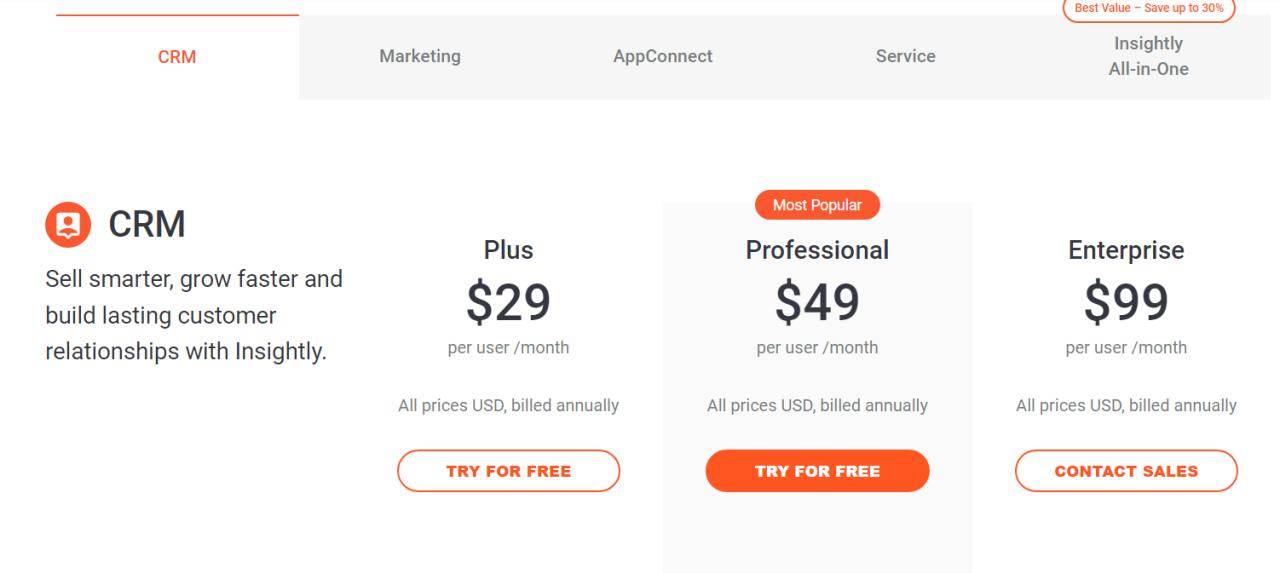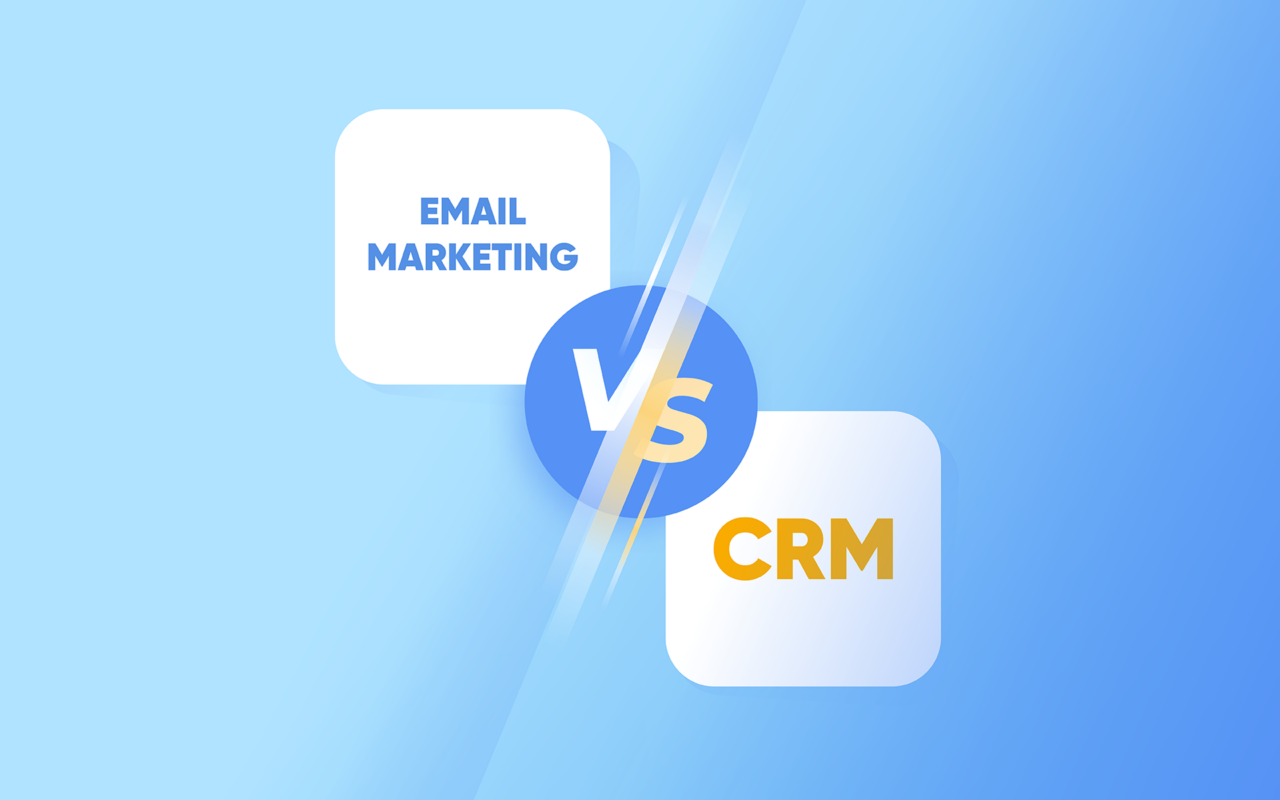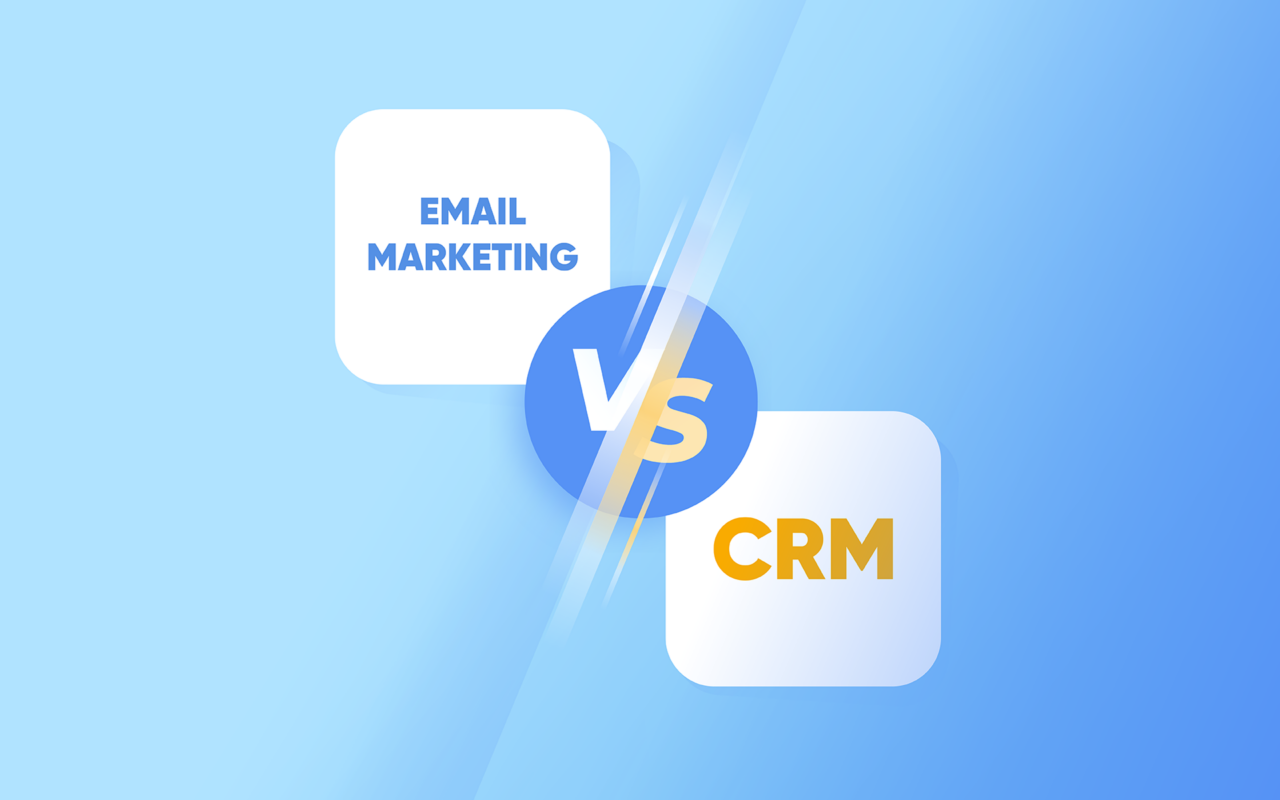Best CRM email marketing leverages customer relationship management systems to personalize and automate email campaigns, resulting in higher engagement and conversions. This powerful combination allows businesses to segment their audience, personalize messages, and track performance effectively, ultimately optimizing marketing ROI. Understanding the key features, strategies, and best practices is crucial for success in today’s competitive digital landscape.
This guide explores the multifaceted world of best CRM email marketing, delving into the selection of the right platform, the implementation of effective strategies, and the critical analysis of campaign performance. We’ll examine various approaches, highlighting their strengths and weaknesses to help you make informed decisions and achieve your marketing objectives.
Defining “Best” CRM Email Marketing

Choosing the “best” CRM email marketing system isn’t about selecting a single, universally superior platform. Instead, it’s about finding the system that best aligns with your specific business needs, goals, and resources. Several key factors contribute to a system’s overall effectiveness and suitability.Defining “best” necessitates a holistic evaluation, encompassing not just features but also performance, cost-effectiveness, and ease of integration with existing workflows.
A system might boast advanced automation features, but if it’s cumbersome to use or lacks adequate customer support, it falls short of being truly “best” for a particular organization.
Factors Contributing to a “Best” CRM Email Marketing System
Several crucial factors contribute to a CRM email marketing system’s effectiveness. These include the system’s ability to segment audiences precisely, personalize email content effectively, automate email campaigns efficiently, analyze campaign performance accurately, and integrate seamlessly with other business tools. A robust system also provides comprehensive reporting and analytics, allowing businesses to track key performance indicators and refine their strategies over time.
Furthermore, scalability, ease of use, and the level of customer support offered are equally important considerations.
Key Performance Indicators (KPIs) for CRM Email Marketing
Measuring the success of CRM email marketing requires tracking key performance indicators (KPIs). These metrics provide insights into campaign effectiveness and areas for improvement. Critical KPIs include open rates (the percentage of recipients who opened an email), click-through rates (the percentage of recipients who clicked on a link within an email), conversion rates (the percentage of recipients who completed a desired action, such as making a purchase), bounce rates (the percentage of emails that weren’t delivered), unsubscribe rates (the percentage of recipients who unsubscribed from the email list), and return on investment (ROI), which measures the profitability of the email marketing campaign.
Analyzing these KPIs helps businesses optimize their email strategies and maximize their return.
Comparison of CRM Email Marketing Approaches
The following table compares different approaches to CRM email marketing based on scalability, cost, and ease of use. Note that these are general observations and specific costs and ease of use can vary based on the chosen provider and the specific features implemented.
| Approach | Scalability | Cost | Ease of Use |
|---|---|---|---|
| All-in-one CRM with integrated email marketing (e.g., HubSpot, Salesforce Marketing Cloud) | High; easily scales with business growth. | High; typically subscription-based with tiered pricing. | Generally user-friendly, but can have a learning curve depending on the platform’s complexity. |
| Dedicated email marketing platforms (e.g., Mailchimp, Constant Contact) | Moderate; scalability depends on the chosen plan. | Moderate; various pricing plans cater to different needs. | Generally easy to use, with intuitive interfaces and drag-and-drop functionality. |
| Custom-built CRM with integrated email marketing | High; highly customizable and scalable. | High; significant upfront investment and ongoing maintenance costs. | Can range from easy to very complex, depending on the level of customization. |
| Spreadsheet-based email marketing | Low; difficult to scale and manage large email lists. | Low; minimal cost beyond spreadsheet software. | Simple for small lists but becomes unwieldy and prone to errors as lists grow. |
CRM Email Marketing Features
Choosing the right CRM email marketing platform hinges on its features. A robust system streamlines communication, automates tasks, and ultimately boosts your marketing ROI. The features described below represent key capabilities that differentiate top performers from the rest.
Effective CRM email marketing platforms go beyond simply sending emails. They integrate seamlessly with your CRM, providing a holistic view of your customer interactions and enabling highly personalized communication strategies. This allows for targeted campaigns, improved customer segmentation, and more effective lead nurturing, all leading to increased conversion rates and stronger customer relationships.
Essential Features of Top-Performing CRM Email Marketing Platforms
Several core features consistently appear in the best CRM email marketing platforms. These features are crucial for maximizing efficiency and impact.
- Email List Segmentation: The ability to divide your contact list into targeted groups based on demographics, behavior, purchase history, or other relevant criteria. This allows for personalized messaging and improved campaign performance.
- Email Template Creation and Management: A user-friendly interface for designing and storing professional-looking email templates. This saves time and ensures brand consistency across all communications.
- A/B Testing Capabilities: Tools to compare different versions of emails (subject lines, content, calls to action) to optimize open and click-through rates. This data-driven approach refines your strategy over time.
- Real-time Analytics and Reporting: Detailed reports showing key metrics like open rates, click-through rates, conversion rates, and unsubscribe rates. This allows for continuous monitoring and improvement of email campaigns.
- Contact Management and Data Synchronization: Seamless integration with your CRM, ensuring accurate and up-to-date contact information. This prevents sending emails to invalid addresses and maintains data integrity.
- Mobile Responsiveness: Emails that render correctly on all devices (desktops, tablets, smartphones) ensuring a consistent user experience regardless of how your audience accesses the message.
- Spam Filtering and Compliance Tools: Features to help you avoid spam filters and comply with email marketing regulations like CAN-SPAM. This protects your sender reputation and ensures deliverability.
Automation Features in CRM Email Marketing
Automation is a game-changer in CRM email marketing. It frees up time and resources, allowing marketers to focus on strategic initiatives rather than repetitive tasks. Automated workflows personalize the customer journey and improve engagement.
- Welcome Emails: Automatically triggered upon signup or purchase, setting the tone for the customer relationship.
- Abandoned Cart Emails: Sent to customers who left items in their online shopping cart, reminding them of their purchase and encouraging completion.
- Post-Purchase Follow-Ups: Automated emails sent after a purchase, offering support, asking for feedback, or suggesting related products.
- Birthday/Anniversary Emails: Personalized messages sent to celebrate special occasions, fostering customer loyalty.
- Drip Campaigns: A series of automated emails sent over time, nurturing leads and guiding them through the sales funnel. For example, a series of emails could educate a prospect about your product over a week, culminating in a final offer.
Advantages and Disadvantages of Integrating CRM with Email Marketing
Integrating your CRM and email marketing platforms offers significant benefits, but it’s important to consider potential drawbacks as well.
- Advantages:
- Personalized Messaging: Tailored emails based on individual customer data leading to higher engagement.
- Improved Customer Segmentation: More effective targeting of specific customer groups.
- Enhanced Lead Nurturing: Automated workflows guide leads through the sales funnel.
- Better Customer Relationship Management: A holistic view of customer interactions across all channels.
- Increased ROI: Improved efficiency and effectiveness of marketing campaigns.
- Disadvantages:
- Implementation Complexity: Integrating different systems can be technically challenging.
- Cost: The combined cost of CRM and email marketing software can be significant.
- Data Security Concerns: Integrating systems requires careful consideration of data security and privacy.
- Potential for Data Silos: If not properly integrated, data may remain fragmented across systems.
Email Marketing Strategies within CRM
Integrating email marketing with your CRM unlocks powerful capabilities to personalize communications and boost engagement. By leveraging the rich data within your CRM, you can move beyond generic blasts and create targeted campaigns that resonate with individual customer needs and preferences. This approach significantly improves conversion rates and cultivates stronger customer relationships.Email marketing strategies within a CRM system revolve around utilizing the detailed customer information stored to personalize and segment outreach efforts.
This allows for more effective communication, leading to higher open and click-through rates, and ultimately, improved sales conversions.
Segmentation Strategies
Effective segmentation divides your audience into smaller, more homogenous groups based on shared characteristics. This allows for highly targeted messaging that resonates with each segment’s specific needs and interests. For instance, you might segment by demographics (age, location), purchase history (high-value customers, recent purchasers), website activity (engaged vs. unengaged), or even customer lifecycle stage (new customer, loyal customer). This ensures that your email campaigns are relevant and timely.For example, a clothing retailer might segment its customers into “frequent buyers,” “occasional buyers,” and “new customers.” The “frequent buyers” segment could receive exclusive offers and early access to new collections, while “new customers” might receive a welcome email with a discount code to encourage repeat purchases.
“Occasional buyers” might receive emails promoting specific products or sales relevant to their past purchases.
Personalization Techniques
Personalization goes beyond segmentation; it’s about tailoring the message to the individual recipient. CRM data enables highly personalized emails that address customers by name, reference past interactions, and offer relevant product recommendations. This creates a more engaging and valuable experience, fostering stronger customer loyalty.Imagine an email to a customer named Sarah who recently viewed a specific pair of shoes on your website.
A personalized email might say, “Hi Sarah, we noticed you were looking at the ‘Emerald Green Heels’ – we thought you might like to see them again!” This level of personalization significantly increases the likelihood of engagement compared to a generic email blast.
A/B Testing Methods
A/B testing allows you to compare different versions of your emails to see which performs better. You can test various elements, such as subject lines, email content, call-to-action buttons, and even the time of day you send your emails. By analyzing the results, you can optimize your campaigns for maximum effectiveness. A/B testing helps refine your email strategy based on measurable results, continuously improving your open and click-through rates.For example, you might test two subject lines: “Get 20% Off Your Next Purchase!” and “Don’t Miss Out: Exclusive Offer Inside!”.
By tracking open rates for each version, you can determine which subject line resonates more effectively with your audience. Similarly, you could test different call-to-action buttons, such as “Shop Now” versus “Learn More,” to see which drives more clicks.
Creating Targeted Email Campaigns Using CRM Data Segmentation
The process of creating targeted email campaigns using CRM data segmentation begins with identifying your target audience within your CRM. You then select the relevant segments based on the desired campaign goals. Next, craft compelling email copy tailored to each segment’s unique characteristics and preferences. Finally, utilize your CRM’s email marketing features to schedule and send the campaigns, ensuring you’re reaching the right people at the right time with the right message.
Careful monitoring of campaign performance allows for continuous improvement and refinement.
Example Email Template Optimized for Conversion
Subject: Hi [Customer Name], We’ve Got Something Special Just For You!Body:Hi [Customer Name],We noticed you recently viewed the [Product Name] on our website. We thought you might be interested in learning more about its [Key Feature 1] and [Key Feature 2].[Image of Product – Imagine a high-quality image of the product, showcasing its key features. The image should be visually appealing and relevant to the product’s description.]The [Product Name] is perfect for [Target Audience/Use Case].
Its [Key Benefit 1] and [Key Benefit 2] make it a must-have for [Target Audience/Use Case].Click here to learn more and get [Discount/Offer]: [Link to Product Page]Thanks,The [Your Company Name] Team
Analyzing CRM Email Marketing Performance
Analyzing the effectiveness of your CRM email marketing campaigns is crucial for optimizing your strategy and achieving better results. By tracking key performance indicators (KPIs), you can gain valuable insights into what’s working and what needs improvement, ultimately leading to higher engagement and conversions. This involves a systematic approach to data collection and analysis, leveraging the built-in reporting features of your CRM and potentially integrating with external analytics tools.Understanding the performance of your email campaigns requires a focus on specific metrics.
These metrics provide a quantitative measure of your campaign’s success and allow for data-driven decisions regarding future campaigns. By consistently monitoring these metrics, you can identify trends, optimize your strategies, and ultimately improve your return on investment (ROI).
Key Metrics for Evaluating Email Marketing Campaigns
The following table illustrates several essential email marketing metrics, their interpretations, and how they can guide future campaign adjustments. It’s important to remember that the ideal values for these metrics will vary depending on your industry, target audience, and specific campaign goals.
| Metric | Interpretation | Campaign Adjustments |
|---|---|---|
| Open Rate | Percentage of recipients who opened your email. A low open rate may indicate issues with subject lines, sender reputation, or list segmentation. | A/B test subject lines, improve sender reputation, refine segmentation to target more relevant audiences, optimize email design for mobile devices. |
| Click-Through Rate (CTR) | Percentage of recipients who clicked at least one link in your email. A low CTR suggests problems with email content, call-to-actions, or landing page experience. | Improve call-to-action (CTA) design and placement, optimize landing page design and functionality, ensure email content is relevant and engaging, use compelling visuals. |
| Conversion Rate | Percentage of recipients who completed a desired action (e.g., purchase, sign-up). A low conversion rate points to issues in the sales funnel or email messaging. | Re-evaluate the sales funnel, optimize landing page forms, refine email messaging to better align with customer needs and expectations, A/B test different CTAs and offers. |
| Bounce Rate | Percentage of emails that were not delivered. High bounce rates indicate issues with email addresses, server problems, or spam filters. | Clean your email list regularly, ensure accurate email addresses, improve sender reputation to avoid being flagged as spam. |
| Unsubscribe Rate | Percentage of recipients who unsubscribed from your email list. A high unsubscribe rate suggests that your emails are irrelevant or annoying to recipients. | Improve email content relevance, provide clear and easy unsubscribe options, reduce email frequency if necessary, better segment your audience. |
Utilizing Analytics Dashboards for Visualizing Campaign Performance
Analytics dashboards provide a centralized and visual representation of your email marketing performance data. These dashboards often offer interactive charts and graphs that display key metrics over time, allowing you to quickly identify trends and patterns. For example, a dashboard might show a line graph of your open rates over the past six months, a bar chart comparing the CTRs of different email campaigns, or a pie chart illustrating the distribution of your email list across different segments.
Many CRM systems offer built-in dashboards, while others may integrate with third-party analytics platforms for more comprehensive reporting. By regularly reviewing these dashboards, you can monitor the overall health of your email marketing strategy and make data-driven adjustments to optimize your campaigns. For instance, a sudden drop in open rates might signal the need to review your subject line strategy, while a consistently low conversion rate might indicate a need to revisit your email content or landing page design.
The visual nature of these dashboards facilitates quicker identification of such issues compared to manually analyzing raw data.
Choosing the Right CRM Email Marketing Platform
Selecting the optimal CRM email marketing platform is crucial for efficient communication and successful marketing campaigns. The right platform will streamline your processes, improve customer engagement, and ultimately drive business growth. The choice depends heavily on your specific business needs, budget, and technical capabilities.
Comparison of Three CRM Email Marketing Platforms
This section compares three popular platforms: HubSpot, Mailchimp, and Salesforce Marketing Cloud. Each offers a unique set of features and caters to different business scales and requirements.
| Feature | HubSpot | Mailchimp | Salesforce Marketing Cloud |
|---|---|---|---|
| Pricing | Tiered pricing, starting with a free plan, scaling to enterprise solutions. | Tiered pricing, with a free plan for limited users and features. | Enterprise-focused, pricing is customized based on needs and usage. |
| Automation Capabilities | Robust workflow automation, including lead nurturing and personalized email sequences. | Good automation features, including A/B testing and scheduled emails. | Highly advanced automation capabilities, including sophisticated segmentation and journey building. |
| Integration Options | Integrates seamlessly with other HubSpot tools and a wide range of third-party applications. | Integrates with various e-commerce platforms and other marketing tools. | Integrates deeply with the Salesforce ecosystem and offers extensive API capabilities. |
| Analytics and Reporting | Comprehensive analytics dashboards providing insights into email performance and campaign effectiveness. | Provides basic email performance metrics and audience segmentation data. | Offers advanced analytics and reporting, including detailed customer journey mapping and predictive analytics. |
| Target Audience | Small to large businesses seeking a comprehensive inbound marketing platform. | Small businesses and startups with simpler email marketing needs. | Large enterprises with complex marketing requirements and a need for deep Salesforce integration. |
Factors to Consider When Selecting a CRM Email Marketing Platform
Choosing the right platform involves assessing your business’s size, technical capabilities, budget, and specific marketing goals. For instance, a small business with limited resources might prioritize affordability and ease of use, while a large enterprise might require advanced automation and integration capabilities. Scalability is also key, ensuring the platform can grow with your business.
Decision Tree for CRM Email Marketing Platform Selection, Best crm email marketing
The following decision tree assists in choosing a platform based on budget and technical expertise.
- Budget:
- Limited Budget: Consider Mailchimp or a free plan from a larger platform with limited features. Focus on essential features like email sending and basic automation.
- Moderate Budget: Explore HubSpot’s tiered plans, offering a balance between features and cost. This allows for greater automation and integration.
- High Budget: Salesforce Marketing Cloud offers advanced features and scalability, but comes with a higher price tag. Suitable for enterprises with complex needs.
- Technical Expertise:
- Low Technical Expertise: Choose a platform with an intuitive interface and robust customer support, like Mailchimp or HubSpot’s entry-level plans. Ease of use is paramount.
- Moderate Technical Expertise: Platforms like HubSpot’s mid-tier plans provide more customization options while remaining relatively user-friendly.
- High Technical Expertise: Salesforce Marketing Cloud allows for advanced customization and integration but requires significant technical skills to manage effectively.
Best Practices for CRM Email Marketing

Effective CRM email marketing hinges on a robust strategy encompassing list hygiene, deliverability optimization, and mobile-friendly content. Ignoring these best practices can significantly hamper your campaign’s success, leading to lower engagement and wasted resources. This section details crucial steps to maximize your email marketing ROI.
Maintaining a Clean and Up-to-Date Email List
Regularly cleaning your email list is vital for maintaining a high sender reputation and avoiding penalties from email providers. A list filled with inactive or invalid email addresses negatively impacts deliverability and can even lead to your emails being marked as spam. This process involves identifying and removing inactive subscribers, bounced emails, and unsubscribes. Strategies include implementing automated processes for removing bounced emails, actively encouraging subscribers to confirm their email address upon signup (double opt-in), and regularly segmenting your list based on engagement levels.
For example, you might segment users based on their open rates and send less frequent emails to those with low engagement, potentially reactivating them with targeted campaigns or removing them if engagement remains consistently low after several attempts. Regular list cleansing ensures that your messages reach the right audience, improving your campaign’s effectiveness.
Improving Email Deliverability and Avoiding Spam Filters
Email deliverability depends on various factors, including sender reputation, email content, and authentication methods. To ensure your emails reach the inbox, prioritize authentication (SPF, DKIM, DMARC) to verify your sender identity. Avoid using spam trigger words and phrases in your subject lines and email body. Maintain a healthy sender reputation by consistently sending high-quality emails with relevant content to engaged subscribers.
Monitor your email metrics closely to identify potential issues early. For instance, a sudden drop in open rates or an increase in spam complaints may indicate a problem requiring immediate attention. Regularly reviewing your email content and adapting to changes in spam filter algorithms is also essential. Consider using A/B testing to optimize subject lines and email content for maximum deliverability.
Optimizing Email Content for Mobile Devices
Given the prevalence of mobile email access, optimizing your emails for mobile devices is non-negotiable. Mobile-first design ensures readability and engagement across various screen sizes. Key considerations include using a responsive design that adapts automatically to different screen sizes; employing a clean and concise layout with clear calls to action; using large, easily tappable buttons; incorporating high-quality images that load quickly; and prioritizing a single-column layout to avoid horizontal scrolling.
For example, instead of using complex tables, use a simple, stacked layout for your content. Avoid excessive use of images or large file sizes, as these can slow down loading times on mobile devices. Testing your emails on different mobile devices and email clients before sending is crucial to ensure a seamless user experience. A well-optimized mobile email will improve engagement and ensure your message is easily consumed by your mobile subscribers.
Legal and Ethical Considerations

Effective CRM email marketing requires a strong understanding of legal and ethical responsibilities. Ignoring these aspects can lead to significant penalties, reputational damage, and loss of customer trust. This section Artikels key legal requirements and ethical best practices to ensure compliance and maintain a positive brand image.Data privacy regulations are paramount in email marketing. Non-compliance can result in hefty fines and legal action.
Understanding and adhering to these regulations is crucial for maintaining a sustainable and ethical email marketing strategy.
Data Privacy Regulations
Several international and regional regulations govern the collection, use, and storage of personal data for marketing purposes. The General Data Protection Regulation (GDPR) in the European Union and the California Consumer Privacy Act (CCPA) in California are prominent examples. GDPR mandates explicit consent for processing personal data, including email marketing, and grants individuals specific rights regarding their data.
The CCPA provides California residents with similar rights, including the right to know what data is collected, the right to delete data, and the right to opt out of data sales. Businesses must ensure their CRM email marketing practices comply with all applicable regulations, regardless of their location or the location of their customers. Failure to do so can result in substantial financial penalties and damage to brand reputation.
A thorough understanding of these regulations and implementation of compliant data handling procedures is essential.
Obtaining Explicit Consent
Explicit consent is a cornerstone of ethical and legal email marketing. This means obtaining freely given, specific, informed, and unambiguous consent from individuals before adding them to your email list or sending them marketing communications. Simply including an opt-out link in an email is insufficient; active confirmation is required. This can be achieved through double opt-in procedures, where individuals confirm their subscription via a separate confirmation email.
Pre-checked boxes or implied consent are generally not considered sufficient under GDPR and similar regulations. Detailed records of consent, including the date and method of obtaining consent, must be maintained for audit purposes. Transparency is key; individuals should clearly understand how their data will be used and have the ability to withdraw their consent at any time.
Ethical Implications of Targeted Email Marketing
While targeted email marketing, enabled by CRM data, can significantly improve campaign effectiveness, it also raises ethical concerns. Using CRM data to create highly personalized messages can feel intrusive if not handled responsibly. Ethical considerations include ensuring data accuracy, avoiding discriminatory practices based on sensitive personal data (e.g., race, religion, political affiliation), and maintaining transparency about data usage.
Best practices involve providing clear and concise information about data collection and usage in privacy policies, offering users granular control over their data preferences, and avoiding manipulative or deceptive marketing practices. Respecting user privacy and building trust are essential for long-term success in email marketing.
Final Summary

Mastering best CRM email marketing involves a strategic blend of technology, data analysis, and a deep understanding of your target audience. By carefully selecting the right platform, implementing effective strategies, and consistently monitoring performance, businesses can unlock the full potential of email marketing and cultivate lasting relationships with their customers. Remember, ethical considerations and compliance with data privacy regulations are paramount throughout this process.
Q&A: Best Crm Email Marketing
What is the difference between CRM and email marketing software?
CRM (Customer Relationship Management) software manages customer interactions and data. Email marketing software focuses specifically on creating and sending email campaigns. Integrated CRM email marketing combines both, leveraging customer data for targeted email campaigns.
How can I improve my email open rates?
Optimize subject lines for brevity and intrigue, personalize emails with recipient names, and ensure emails are mobile-friendly. Segment your audience to send more relevant content and test different send times.
What are the legal implications of sending marketing emails?
Always obtain explicit consent, comply with regulations like GDPR and CCPA, and provide a clear unsubscribe option in every email. Maintain accurate records of consent and ensure transparency in your data practices.
How do I choose the right CRM email marketing platform for my business?
Consider your budget, technical expertise, business size, and required features. Start by identifying your key needs and then compare platforms based on their capabilities and pricing models.

